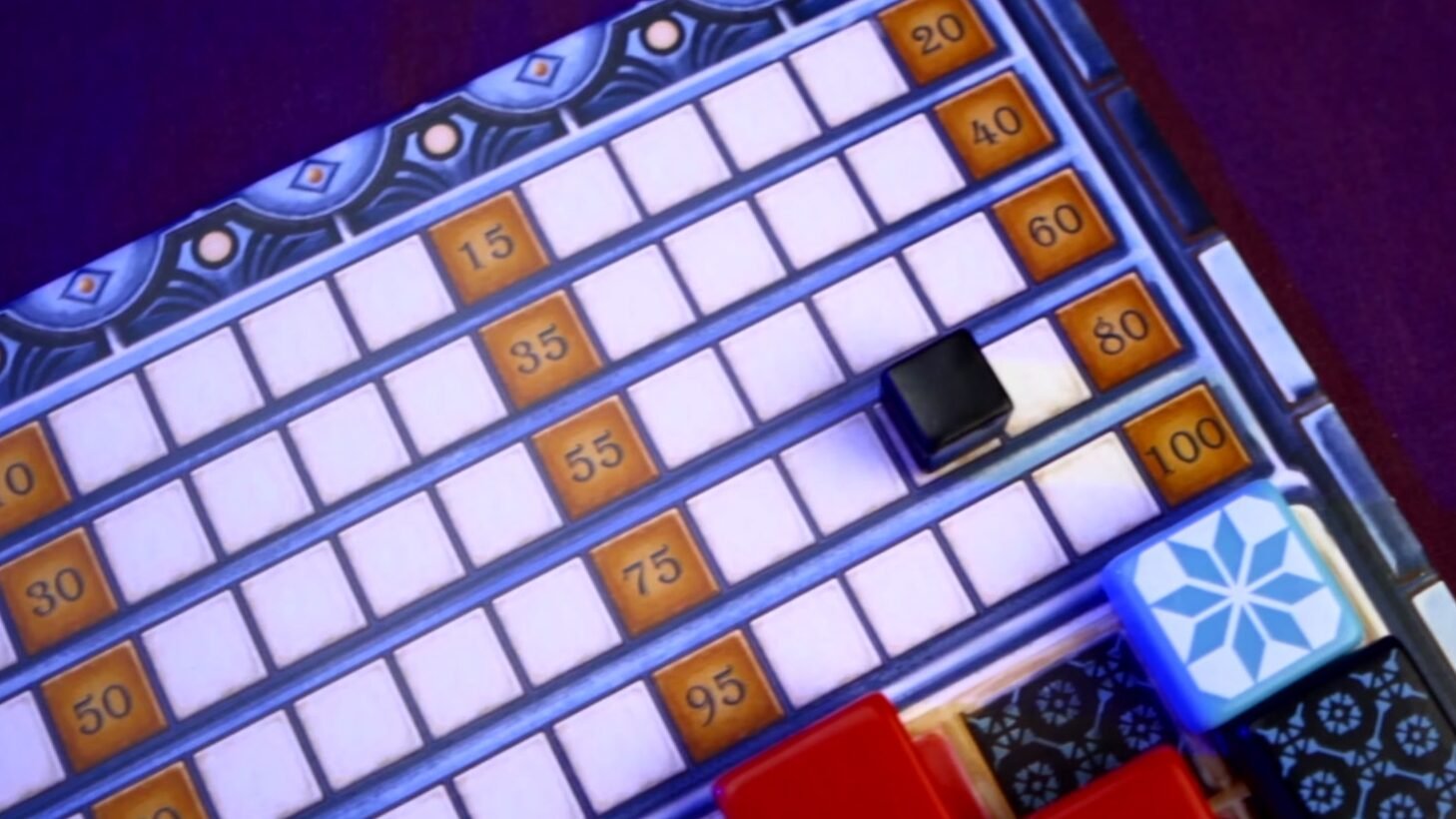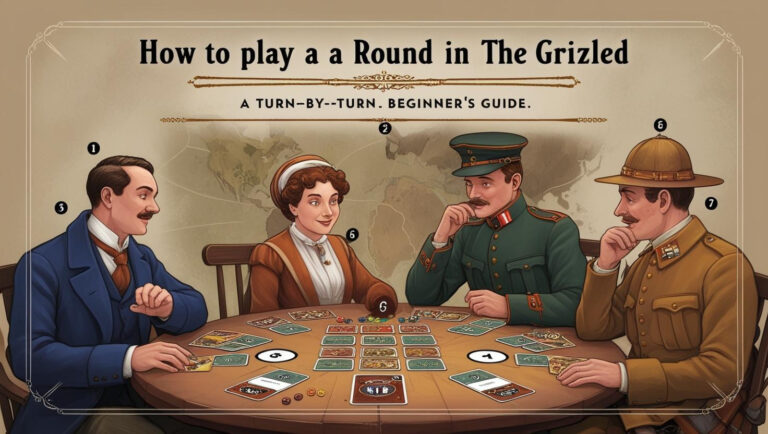Azul Rules Explained: Master Strategy & Tips for New and Experienced Players

What Makes Azul a Must-Have for Families?
Azul is a beloved strategy board game for families, offering a unique combination of fun, challenge, and visual appeal. This beautifully designed tile-laying game invites players of all ages to engage in friendly competition while fostering creativity and strategic thinking. Azul's accessible rules and elegant design make it perfect for family game nights, with the game mechanics offering depth for both new players and seasoned enthusiasts. The simplicity of the rules allows for easy learning, but the complexity of strategies ensures that everyone can play and enjoy, regardless of skill level.
The game's vibrant tiles and the challenge of trying to complete patterns create a truly immersive experience. Whether you're a parent teaching your child or a group of friends competing, Azul's dynamic gameplay keeps players engaged while encouraging family bonding.
Setting Up Azul: A Beginner-Friendly Guide
Setting up Azul is simple, but it does require some careful arrangement. Follow these steps to prepare for a game:
- Prepare the Game Board: Each player gets their own personal player board and places it in front of them. This board has a grid layout with five rows for players to fill with tiles.
- Create the Factory Displays: Use the 9 factory displays, which will hold the tiles during the game. Place one factory display for every player, plus one extra, so 5 players would use 6 displays, and so on.
- Tile Distribution: Shuffle all the tiles and place them in the tile bag. Draw tiles from the bag and randomly place 4 tiles in each factory display. Each player is ready to begin!
Once the game board is set and the tiles are prepared, you're all set to dive into the rules and gameplay!
check out our detailed review of azul & why its concidered a masterclass of tile-laying board games
How to Play Azul: Rules Simplified for Beginners
Game Objective
The goal of Azul is to score the highest number of points by filling your player board with colorful tiles in specific patterns. Points are awarded for completing horizontal and vertical rows, as well as completing sets of specific tiles.
Key Turns Explained
The game proceeds in rounds, with each round consisting of three main phases:
- Tile Selection: Players take turns selecting tiles from the factory displays or the center of the table. When selecting, you must take all tiles of the same color from either a factory display or the central area. Any leftover tiles from the display go into the center.
- Tile Placement: After selecting tiles, players place them on their player board, trying to fill in rows and columns to score points. Tiles are placed on one of five rows, each corresponding to a different color. Players must complete a row before they can move on to the next row.
- End of Round: After all tiles have been chosen, players score points based on the tiles they’ve placed, and any leftover tiles are discarded. The round ends when all tiles have been placed, and new tiles are drawn from the tile bag.
Winning the Game
Azul is played over multiple rounds, and the game ends when all rows on the player board have been completed. At the end of the final round, players tally up their points, including points for rows, columns, and completed sets. The player with the highest score wins the game.
Winning Strategies for Azul: Tips from Experts
Mastering Tile Selection
To maximize your points in Azul, you need to be strategic about how you select tiles. If you see a tile color that benefits your strategy but is a bit more abundant on a factory display, you might want to grab it early to avoid giving your opponents a chance to take it.
For example, if you’re working to complete a row of blue tiles, taking all the blue tiles from a display might not only give you the tiles you need but also deny your opponents a key resource. Understanding how to balance your own needs with denying others opportunities is a powerful strategy.
Understanding the Pattern Scoring
While it’s tempting to focus on filling rows, completing columns and specific tile patterns is just as crucial. Try to focus on filling your player board in a way that allows you to score points both horizontally and vertically.
For example, aim to complete entire rows of a single color to earn points for that row's tiles. But also plan ahead for columns and special tile combinations, like completing an entire column of tiles in the same color, which can yield bonus points.
Risk and Reward
Azul rewards careful planning, but sometimes the risks pay off. If you’re trailing behind, taking a chance by selecting tiles from the center might give you the opportunity to score big. It’s all about balancing risk with reward and adapting to the changing game state.
Adapting Azul for Different Player Counts
Azul is a flexible game that works well with 2, 3, 4, or more players, but the dynamics change based on the number of people involved. With fewer players, there will be more factory displays per person, and the game tends to move faster. In larger groups, the number of available tiles decreases more quickly, so players must make faster decisions.
For example, with just 2 players, you can be more strategic in your tile selection and placement. The fewer players mean there’s more opportunity to complete your desired patterns without as much interference. However, in larger groups, the game becomes a bit more chaotic, with more competition for tiles.
Teaching Azul to Kids: A Parent’s Guide
Azul is an excellent game for children, as it promotes critical thinking, planning, and color recognition. Here are a few tips for teaching kids how to play Azul:
- Simplify the Rules: Initially, you can leave out some of the more advanced scoring opportunities to make the game easier to understand. Focus on the basics, like filling rows and taking tiles, before introducing the complexities of scoring.
- Use Visual Cues: Children will find it easier to grasp the concept of patterns by looking at the tiles and board. Encourage them to spot patterns early and understand how to fill rows with matching tiles.
- Encourage Strategy: Kids love to win, so teach them to think ahead. Help them understand that choosing tiles carefully can block others and give them an advantage.
Fun Variations of Azul You Should Try
Once you've mastered the standard rules of Azul, consider trying some fun variations to spice up the game:
- Team Play: In larger groups, you can play in teams. This creates an interesting dynamic, as players must work together to complete rows and blocks.
- Expansion Packs: Azul has several expansions, like Azul: Stained Glass of Sintra and Azul: Summer Pavilion, which introduce new rules, tiles, and ways to score points. These expansions can add more variety to your gameplay.
- House Rules: Some players like to introduce their own twists to the game, such as allowing players to trade tiles or creating specific bonus points for certain patterns.
Frequently Asked Questions
How long does it take to play Azul?
Azul typically takes 30 to 45 minutes to play, making it an ideal game for a quick and engaging family game night.
Can you play Azul with younger children?
Yes! Azul is suitable for kids aged 8 and up, though younger players can enjoy the game with a simplified version of the rules. The colorful tiles and pattern recognition make it easy for younger children to engage.
What happens if a player can’t complete a row?
If a player is unable to complete a row, the tiles left in that row are discarded, and the player loses points. It’s important to plan ahead and complete rows early to avoid losing points!
How do you prevent other players from taking your desired tiles?
You can prevent other players from taking your tiles by carefully choosing your turns and paying attention to which tiles your opponents are collecting. Don’t be afraid to grab tiles early to prevent them from benefiting your opponents.
Is Azul a good game for beginners?
Absolutely! Azul is easy to learn and offers plenty of opportunities for strategic play, making it perfect for beginners. The rules are simple, but mastering the strategy takes time, which keeps the game fun for new players and seasoned gamers alike.






